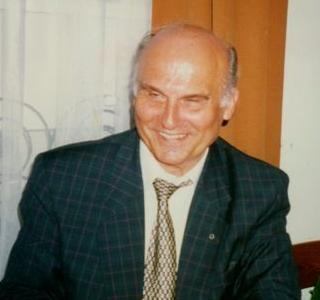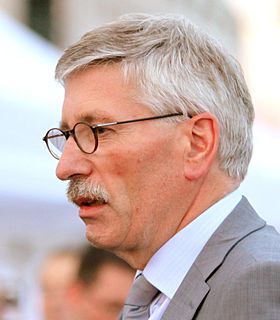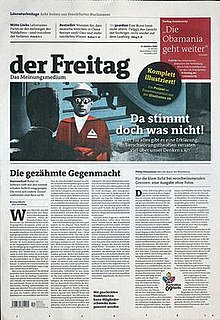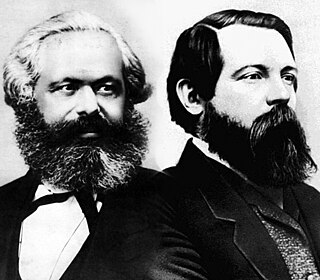
Ryszard Kapuściński was a Polish journalist, photographer, poet and author. He received many awards and was considered a candidate for the Nobel Prize for Literature. Kapuściński's personal journals in book form attracted both controversy and admiration for blurring the conventions of reportage with the allegory and magical realism of literature. He was the Communist-era Polish Press Agency's only correspondent in Africa during decolonization, and also worked in South America and Asia. Between 1956 and 1981 he reported on 27 revolutions and coups, until he was fired because of his support for the pro-democracy Solidarity movement in his native country. He was celebrated by other practitioners of the genre. The acclaimed Italian reportage-writer Tiziano Terzani, Colombian writer Gabriel García Márquez, and Chilean writer Luis Sepúlveda accorded him the title "Maestro".

Nuruddin Farah is a Somali novelist. His first novel, From a Crooked Rib, was published in 1970 and has been described as "one of the cornerstones of modern East African literature today". He has also written plays both for stage and radio, as well as short stories and essays. Since leaving Somalia in the 1970s he has lived and taught in numerous countries, including the United States, Britain, Germany, Italy, Sweden, Sudan, India, Uganda, Nigeria and South Africa.

Der schwarze Kanal was a series of political propaganda programmes broadcast weekly between 1960 and 1989 by East German television Deutscher Fernsehfunk. Each edition was made up of recorded extracts from recent West German television programmes re-edited to include a Communist commentary.
Esther Levine is a German born, New York based photographer. After studying photography at the City College of New York from 1994 to 1996 she enrolled in the documentary photography program at the International Center of Photography in New York City in 1996. Levine, a Leica photographer, has had exhibits in New York, Berlin, Buenos Aires, Switzerland, Guangzou and Mannheim, shot ad campaigns and had her work published in a variety of European magazines.

Douglas Richard Alan Saunders is a British and Canadian journalist and author, and columnist for The Globe and Mail, a newspaper based in Toronto, Ontario, Canada. He is the newspaper's international-affairs columnist, and a long-serving foreign correspondent formerly based in London and Los Angeles, and is the author of three books focused on cities, migration and population. He is currently a Berlin-based resident fellow with the Robert Bosch Academy.
The Lettre Ulysses Award for the Art of Reportage has been given annually since 2003 for the best texts in the genre of literary reportage, which must have been first published during the previous two years. The award was initiated by Lettre International in Berlin, and is organized by the Foundation Lettre International Award, a joint partnership between Lettre International and the Aventis Foundation. The Goethe-Institut also cooperates with the project.
Petroleum Economist is a monthly magazine that provides macro-economic and geopolitical analysis of the energy industry. It is part of Gulf Publishing Holdings.
Nuccio Ordine is an Italian author and philosopher, professor of literature at the University of Calabria. He is one of the world's top experts on Renaissance and the philosopher Giordano Bruno.

Linda Maria Baros is a French-language poet, translator and literary critic, one of the most powerful new voices on today's poetry scene . She lives in Paris, France.

World Have Your Say (WHYS) is an international BBC global discussion show, that was broadcast on BBC World Service every weekday at 1600 hours UTC and on BBC World News every Friday at 1500 hours UTC.

Thilo Sarrazin is a German politician and former member of the SPD, writer, senator of finance for the State of Berlin from January 2002 until April 2009, former member of the Executive Board of the Deutsche Bundesbank until 2010.

Janne Teller is a Danish writer of Austrian–German descent, who lives in New York and Berlin.

Der Freitag is a German weekly newspaper established in 1990. It is published in Rhenish format. The place of publication is Berlin. Its publisher and editor-in-chief is Jakob Augstein.

Presseurop was a multilingual Paris-based news portal that translated and published Europe-related news articles daily from over two hundred sources into ten European languages, including English. It was funded by the European Commission and was launched in 2009 by the French newspaper Courrier International, the Portuguese newspaper Courrier Internacional, the Polish newspaper Forum, and the Italian newspaper Internazionale.

The Berliner Illustrirte Zeitung, often abbreviated BIZ, was a German weekly illustrated magazine published in Berlin from 1892 to 1945. It was the first mass-market German magazine and pioneered the format of the illustrated news magazine.

Die Marx-Engels-Gesamtausgabe (MEGA) is the largest collection of the writing of Karl Marx and Friedrich Engels in any language. It is an ongoing project intended to produce a critical edition of the complete works of Marx and Engels that reproduces the extant writings of both authors in books of high-quality paper and library binding.
Thomas Rusch is a German photographer living in Berlin, Hamburg and Paris.
Péter Farkas is a Hungarian-German writer living in Cologne, Germany.

Youssef Rakha is an Egyptian writer. His work explores language and identity in the context of Cairo, and reflects connections with the Arab-Islamic canon and world literature. He has worked in many genres in both Arabic and English, and is known for his essays and poems as well as his novels.

Jeanette Erazo Heufelder is a German ethnologist. She has become known as an author and documentary film maker of biographical and literary pieces. Her particular regional focus is on Latin America.














